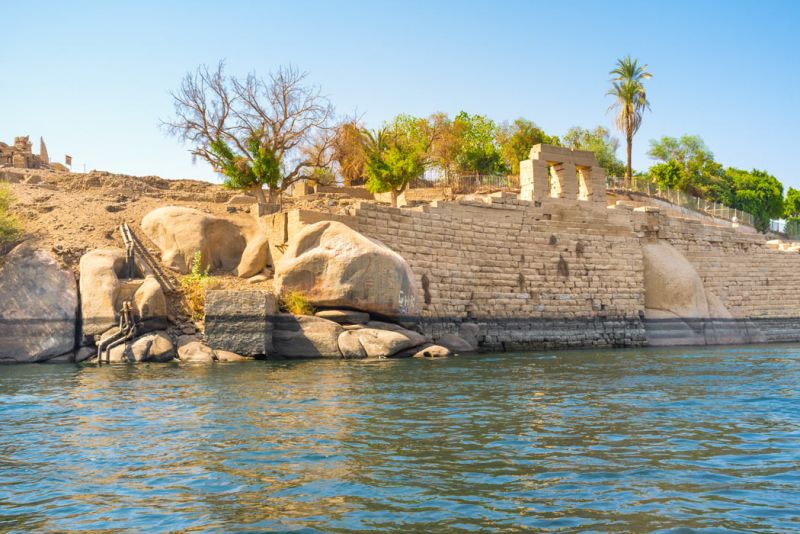Embark on a Time-Traveling Odyssey with Top Ten Tours: Explore Elephantine Island’s Ancient Trade Hub!
Are you ready to journey through the corridors of time and unravel the secrets of an ancient trade hub? Join us at Top Ten Egypt Tours, your gateway to extraordinary adventures in Egypt, as we invite you to discover the captivating history of Elephantine Island!
The Historical Tapestry:
Elephantine Island, situated in the heart of the Nile River near the bustling city of Aswan, boasts a rich history that spans millennia. Revered as one of Egypt’s oldest inhabited locations, the island was a crucial center of trade and commerce during the heyday of ancient civilizations. Its strategic position at the First Cataract of the Nile made it a gateway to the south, connecting Egypt with Nubia and beyond.
Trade and Commerce:
As we step back in time, envision Elephantine Island as a bustling trade hub, where merchants from various corners of the ancient world converged. The island’s prominence as a trade center is attributed to its abundant resources, including precious stones, ivory, and exotic goods sourced from the southern regions.
The island’s strategic location on the Nile River made it an ideal spot for merchants to exchange goods with neighboring countries. Its proximity to Nubia, Ethiopia, and Sudan allowed traders to easily transport goods such as ivory, gold, and spices. The island’s fertile soil also made it an agricultural hub, with crops such as wheat, barley, and grapes being grown and traded.
The island’s significance continued during the Ptolemaic period (305-30 BCE) when it became a major center for trade and commerce. The Ptolemies built several temples and shrines on the island, including the Temple of Satet, dedicated to the goddess of the Nile. The temple was adorned with intricate carvings and hieroglyphics depicting scenes from daily life on the island.
During the Roman era (30 BCE-395 CE), Elephantine Island became a thriving commercial center due to its location on the trade route between Alexandria and Meroe (the ancient capital of Kush). The island’s prosperity led to the construction of several villas and bathhouses by wealthy merchants.
The Temple of Khnum:
At the heart of Elephantine Island stands the venerable Temple of Khnum, dedicated to the ram-headed deity associated with the inundation of the Nile. This sacred site served not only as a place of worship but also as a testament to the island’s economic significance. Inscriptions and reliefs on the temple walls depict scenes of trade caravans laden with goods, underscoring the island’s pivotal role in ancient commerce.
The Nilometer:
Adjacent to the Temple of Khnum, the Nilometer offers a fascinating glimpse into the ancient Egyptians’ mastery of their environment. This ingenious structure, used to measure the Nile’s water levels, played a pivotal role in agricultural planning and ensured the prosperity of the region.
The Nubian Village:
Beyond the archaeological wonders, Elephantine Island is also home to a Nubian village, providing a living link to the island’s vibrant past. Engage with the local community, savor traditional Nubian cuisine, and witness age-old customs that have endured through generations.
Intriguing and evocative, Elephantine Island invites modern-day travelers to immerse themselves in the echoes of an ancient trade hub. As part of the ‘Lesser-known Temples and Ruins’ cluster, this hidden gem offers a unique perspective on Egypt’s historical tapestry. Step back in time, wander through the Temple of Khnum, and absorb the essence of a bygone era on Elephantine Island, where history and mystique converge amidst the timeless flow of the Nile.
Don’t miss the chance to be part of this enchanting expedition into the ancient trade hub of Elephantine Island. Book your tour with Top Ten Egypt Tours today and let the mysteries of history unfold before your eyes. Join us on a voyage that transcends time, where every step is a stride into the heart of Egypt’s captivating past!



Comment (0)